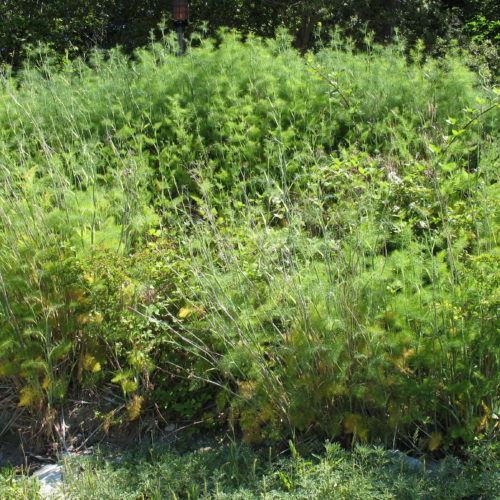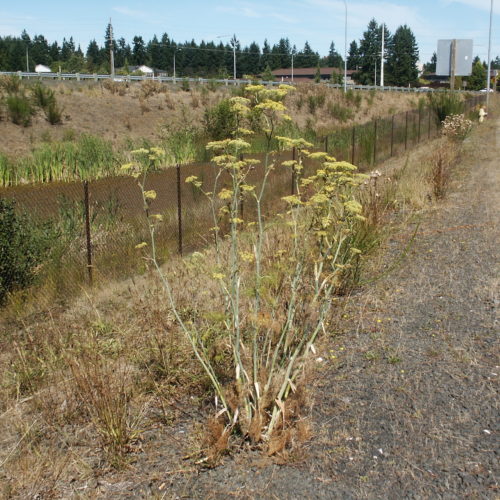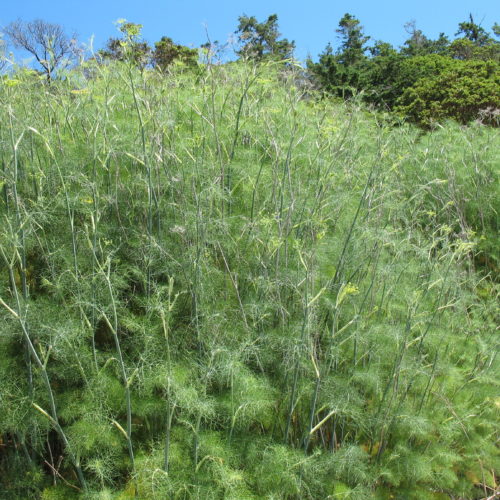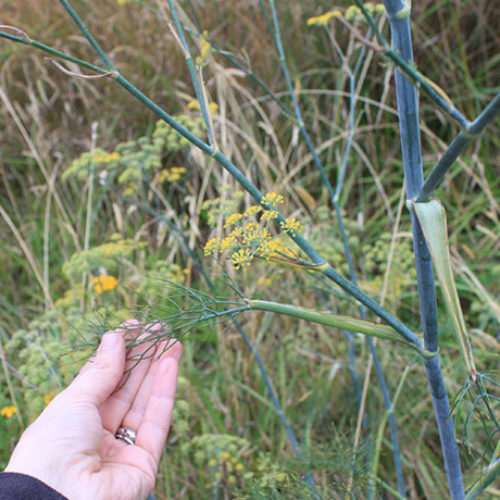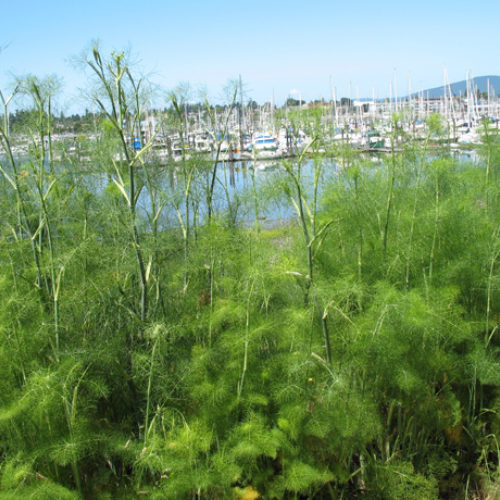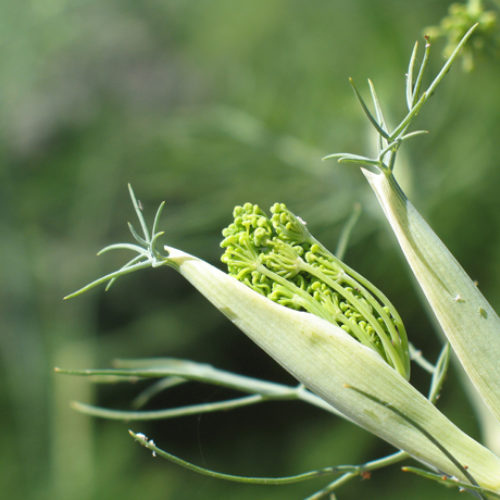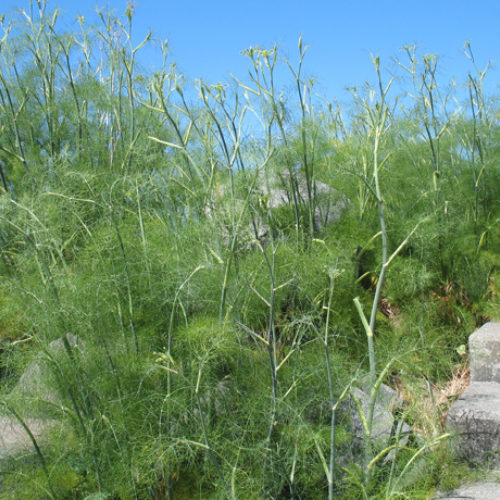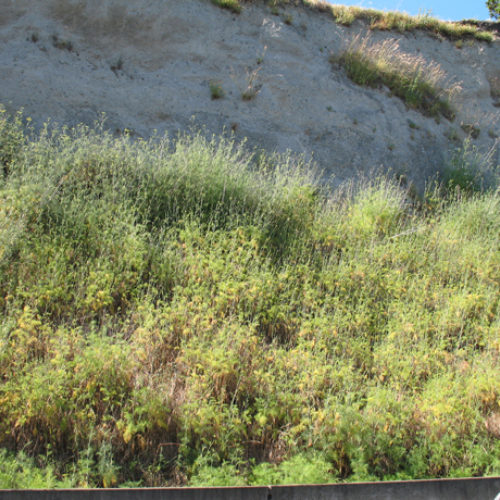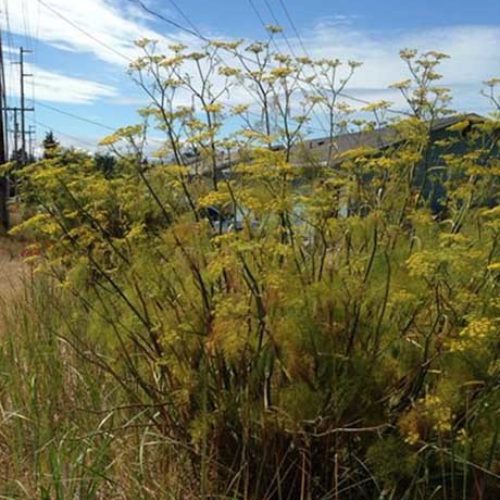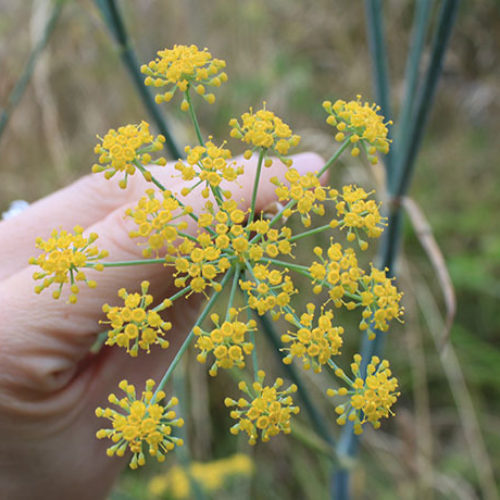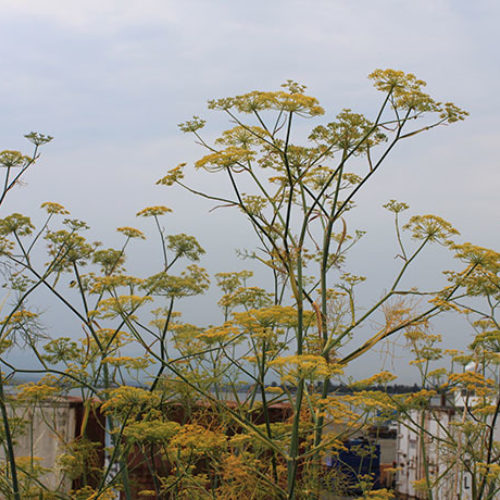Common Fennel
Foeniculum vulgare
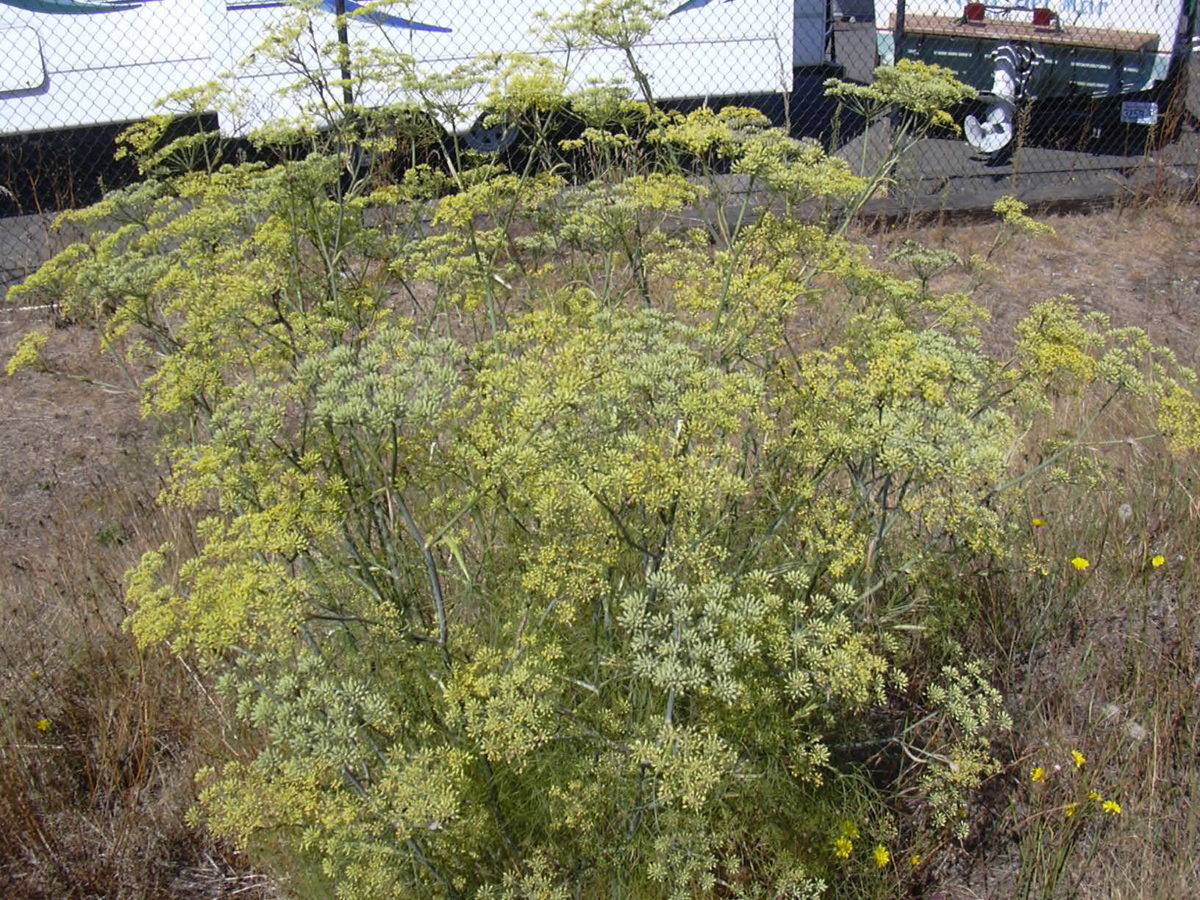
Family: Apiaceae
Other Common Names: sweet fennel, bronze fennel
Weed class: B
Year Listed: 2007
Native to: Northern Africa, Asia and Europe
Is this Weed Toxic?:
not known to be
Why Is It a Noxious Weed?
Common fennel escapes cultivation and quickly establishes dense infestations that crowd out native plants that are critical to wildlife habitats. Infestations are becoming more common in Western Washington and may pose a threat to native grasslands.
How would I identify it?
General Description
Common fennel is a large, aromatic, perennial herb. It can grow up to 6.7 feet tall (2 meters) and has a very large taproot. Foliage, stems, roots and seeds are hairless and all have a very strong licorice scent.
Flower Description
Flowers are small and yellow and form an umbrella shaped cluster. Plants bloom from May to September.
Leaf description
The leaves have an overall triangular shape and are many times divided into thin, featherlike leaflets and are dark green or bronze. Leaf stems (petioles) are swollen and fleshy and have a widened base.
Stem description
Stems are upright and branched.
Fruit Seed Description
Seeds are about 0.15 inches (3.5 to 4 mm) long and have small ridges.
Where does it grow?
Common fennel can be found along roadsides, in pastures, prairies, streamsides, coastal bluffs as well as wetland areas. Please click here to see a county level distribution map of common fennel in Washington.
How Does it Reproduce?
Common fennel reproduces from seed. It can also reproduce from pieces of the root crown.
How Do I Control It?
General Control Strategy
Common fennel can be controlled using mechanical techniques as well as herbicides.
Mechanical Control
Small infestations can be hand pulled but mature plants are difficult to remove because of the taproot. Above ground growth can be repeatedly cut prior to flowering to deplete below ground energy reserves. This technique may need to be down for several years to be successful. Cutting above ground growth when flowers are present may promote seed dispersal.
Herbicide Control
Please refer to the PNW Weed Management Handbook, or contact your county noxious weed coordinator.
For More Information
See our Written Findings for more information about common fennel (Foeniculum vulgare).
Report on common fennel from the book "Weed Control in Natural Areas in the Western United States"
Thurston County NWCB Fact Sheet on common fennel
Whatcom County NWCB Fact Sheet on common fennel



